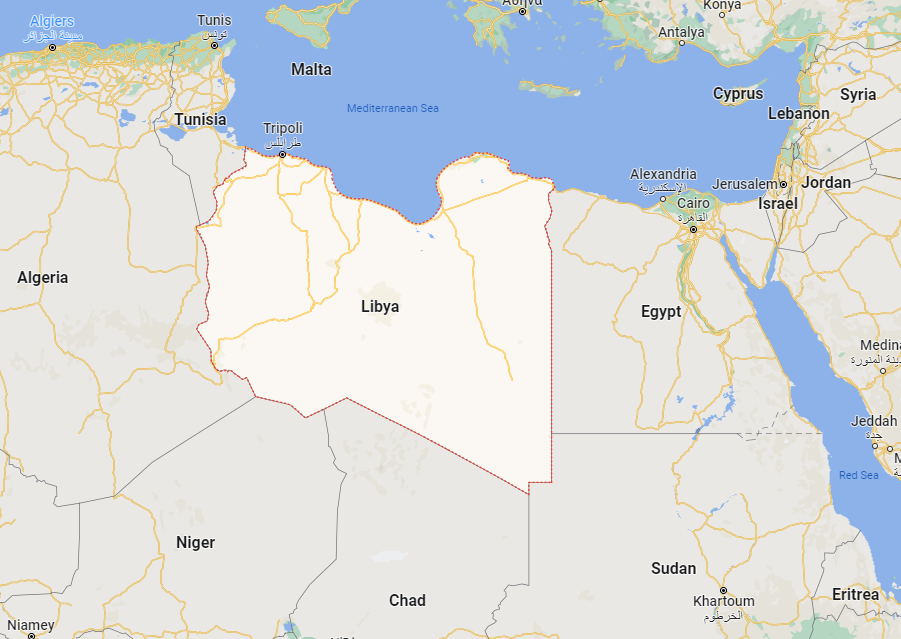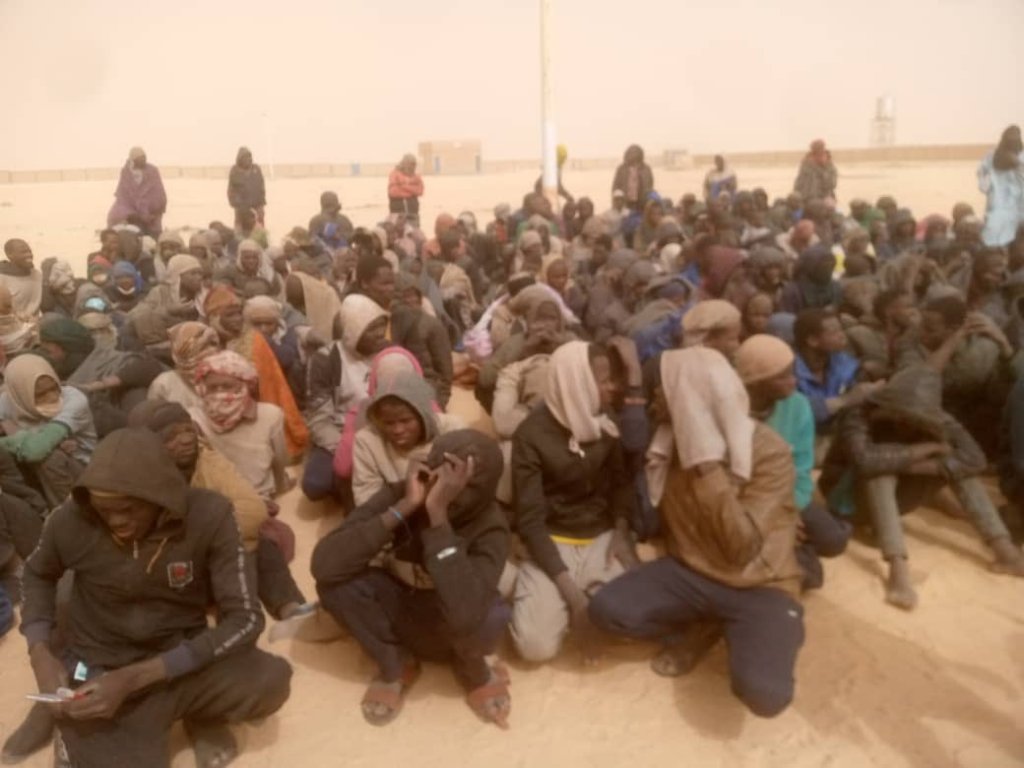According to the International Organization for Migration, the Libyan coast guard intercepted 21,700 migrants in 2024 as they attempted to reach Europe. Upon their forced return to Libya, most find themselves imprisoned and subjected to inhumane treatment.
In 2024, Libyan maritime forces intercepted 21,700 migrants in the Mediterranean, according to figures from the International Organization for Migration (IOM). This marked an increase from the 2023 total of 17,000, though it fell short of the 2022 count of 24,600. Among them were 1,500 women and 700 children.
All those attempting the crossing embark on rickety wooden or metal boats entirely unsuitable for such sea voyages. Migrants are usually intercepted by the Libyan coast guard, which receives funding and training from the European Union (EU), in national or international waters.

Since 2017, under an agreement between Libya and Italy backed by Brussels, Europe delegated the coordination of sea rescues near Libya’s coast to Libyan authorities. Previously, this responsibility fell to Rome or Valletta in Malta. The agreement aimed to “stem” the flow of migrants arriving in Europe. Under this deal, Italy provides training and equipment to Libyan authorities to intercept migrants in the Mediterranean.
This arrangement has long been criticized by human rights organizations, not only for its potentially tragic outcomes -- such as the November 6, 2017, incident where 15 men, women, and children drowned due to Libyan authorities' inaction and lack of experience -- but also for the fate of migrants forcibly returned to Libya. Many end up imprisoned and subjected to horrific abuse, including torture, beatings, rape, and even murder.
For several years, the InfoMigrants editorial team has received desperate messages from individuals in Libya detailing arbitrary detention, torture, enslavement, and abandonment in the desert without water.
Read AlsoCourt imposes 'impossible requirement' on asylum seekers in Frontex cases, say activists
Expulsions to Niger
During the night of January 3 to 4, 613 migrants were expelled by Libyan forces and arrived in the town of Dirkou, Niger. Among them were around 63 minors. These Nigerien nationals had been arrested in various locations across Libya, in the streets, mosques, or at their workplaces and forcibly returned, according to Alarme Phone Sahara, an organization assisting migrants in the region's deserts. "All their belongings, including phones and money, were confiscated by Libyan forces," the organization added.
Photos shared by the aid platform on social media show exhausted migrants sitting on the sand, with some wearing hoods or cloths over their heads and others barefoot.
“Members of Alarme Phone Sahara as well as other representatives of civil society, governmental and international structures supported the arrivals with dates, cookies and water. Nevertheless, many of the deportees' needs could not yet be met,” the organization wrote on X.
The migrants are expected to be transferred to Agadez in the coming days. Dirkou, with a population of around 15,000, often serves as the first point of reception for migrants expelled from Libya. It hosts a transit center managed by the IOM, but this facility offers just 30 spaces and is already full.

With UN shelters overcrowded, many migrants in Dirkou are forced to sleep outdoors in harsh conditions, deprived of water, food, and hygiene supplies. In mid-November, 400 migrants were stranded, some for months, in Dirkou. Most were Nigerian nationals sleeping on mats laid on the sand outside the IOM center walls. While many expressed a desire to return to their home countries, UN-organized transfers remain at a standstill.

Expulsions from Libya to Niger are part of a broader EU-backed policy aiming to curb migration to Europe. European governments fund security force training in North African countries such as Libya, Mauritania, Morocco, and Tunisia, ensuring that migrants attempting to reach Europe are intercepted and forcibly returned. However, these efforts leave migrants vulnerable, often abandoned in remote desert areas without resources, resulting in severe hardships and fatalities due to dehydration, exhaustion, and violence.
In 2024, similar large-scale expulsions occurred in Assamaka, Niger, after migrants were deported from Algeria, further highlighting the dangerous conditions migrants face in their desperate journeys across North Africa. These ongoing operations reflect the deadly reality of migration policies designed to deter migrants from reaching Europe. Each year, countless migrants disappear in the Sahara, succumbing to dehydration, losing their way, or falling victim to traffickers.
Read AlsoHundreds of migrants detained in Libyan desert
Images of slavery
Since Muammar Gaddafi's fall in 2011, Libya has descended into chaos, with armed groups abducting sub-Saharan African migrants from the streets, migration routes, or even their homes, often recording their torture to extort money from their families. "This is the reality of Libya today,” South Sudanese activist and co-founder of "Refugees in Libya," David Yambio writes on social media. A survivor himself he states that it is "not enough to call it chaotic or lawless; that would be too kind...The auctions today carry the same cold calculations as those centuries ago.”
Speaking to InfoMigrants, Yambio explains that those responsible for the slave trade include a mix of bandits as well as entities linked to the interior ministry, particularly the Libyan coast guard. It is also not uncommon for guards in official detention centers to sell migrants to traffickers, while militias are deeply involved in trading in human beings, he says.
Yambio, now a refugee in Italy, continues to document the brutal abuses suffered by migrants imprisoned in both Libya’s official and clandestine detention centers through social media. One recent example is a photo shared on January 6, 2025, showing an Ethiopian woman gagged and tied in a cell. Her captors are demanding 6,000 US dollars from her family for her release.
"Naima’s fate, and that of the 50 other victims in Kufra, remains uncertain... Meanwhile, their families are left to battle with the impossible, raising the funds demanded by traffickers or risking the loss of their loved ones forever," Refugees in Libya stated on social media.
The post continues, "the slave trade is alive and thriving in Libya. It thrives in the silence of nations, in the shadows of complicit systems, and in the unchecked racism that dehumanizes Black lives."
Naima's story, as Yambio writes, is not unique but a painful continuation of a history that refuses to end.
Read AlsoUNODC report: Trafficking on the rise, forced labor overtaking sexual exploitation
Additional reporting from Leslie Carretero and InfoMigrants France
